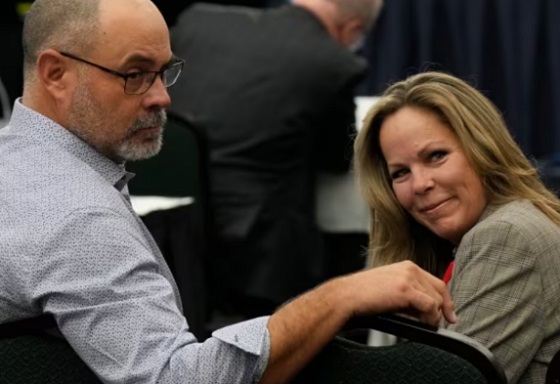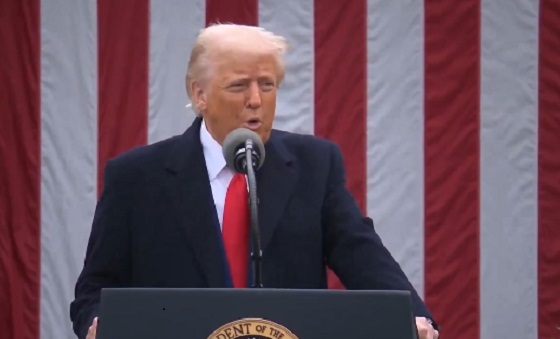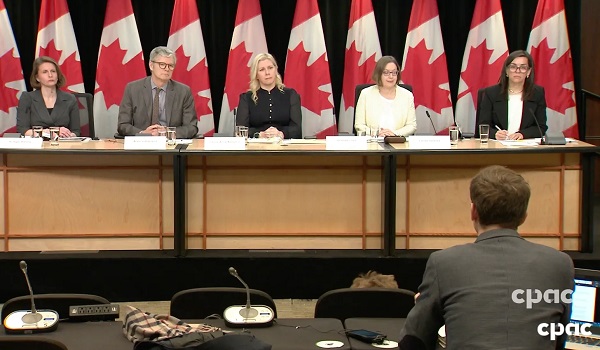Alberta
COVID19 spreading events – Premier Kenney asks Calgary and Edmonton residents to stop hosting gatherings

From the Province of Alberta
Strong public health measures are being implemented to protect the health system and limit the spread of COVID-19.
Expanded mandatory and voluntary limits on social gatherings are now in place to help reduce growing caseloads.
New COVID-19 measures
- Effective immediately, new mandatory and voluntary public health measures will help protect the health system and limit the spread of COVID-19.
- All Edmonton and Calgary residents should stop holding social gatherings within their homes and instead socialize in structured settings where it is easier to limit risk of exposure.
- The mandatory 15-person limit on social gatherings is being expanded to all communities on the watch list.
- Voluntary measures to limit cohorts to no more than three and to wear masks in the workplace unless able to safely distance are also strongly recommended for any community on the watch list, regardless of location.
- Additional measures to bolster Alberta’s public health response:
- AHS is prioritizing the hiring of about 380 additional contact tracing staff that will expand the contact tracing team to more than 1,100 people.
- To support contact tracing, all Albertans should download ABTraceTogether, Alberta’s contact tracing app.
- Alberta will also be shifting back to daily reporting of case numbers and information, including on weekends and holidays.
Latest updates
- To date, 24,684 Albertans have recovered from COVID-19.
- There are currently 6,822 active cases in the province.
- Over the last 48 hours:
- 802 new cases were identified on Nov. 4
- 609 new cases were identified on Nov. 5
- Alberta labs have now performed 1,869,192 tests on 1,305,540 people.
- There were nine additional deaths since Nov. 3, bringing the total number of COVID-19 deaths to 352.
- All zones across the province have cases:
- Calgary Zone: 2,886 active cases and 10,966 recovered
- South Zone: 398 active cases and 2,216 recovered
- Edmonton Zone: 2,819 active cases and 8,713 recovered
- North Zone: 431 active cases and 1,821 recovered
- Central Zone: 255 active cases and 914 recovered
- 33 active cases and 54 recovered cases in zones to be confirmed
- Additional information, including case totals, is online.
- There are 392 active cases and 1,631 recovered cases at continuing care facilities; 221 facility residents have died.
- School case information will be updated on Monday.
Updated contact tracing approach
- Alberta is piloting a targeted contact testing approach. This will make contact tracing faster and focus on populations at greatest risk of illness and further spreading COVID-19.
- Alberta Health Services will directly notify close contacts of confirmed COVID-19 cases in three priority groups only:
- health-care workers
- minors (parents will still be notified if their child has been exposed in a school setting)
- individuals who live or work within congregate or communal facilities
- AHS will no longer directly notify close contacts outside of these three priority groups, at this time.
- Albertans outside the priority groups who test positive will be asked to notify their own close contacts.
- AHS will continue to directly notify all positive cases of COVID-19 of their result, identify priority contacts that AHS will notify, and provide the case with guidance on notifying their own contacts.
Alberta
Big win for Alberta and Canada: Statement from Premier Smith

Premier Danielle Smith issued the following statement on the April 2, 2025 U.S. tariff announcement:
“Today was an important win for Canada and Alberta, as it appears the United States has decided to uphold the majority of the free trade agreement (CUSMA) between our two nations. It also appears this will continue to be the case until after the Canadian federal election has concluded and the newly elected Canadian government is able to renegotiate CUSMA with the U.S. administration.
“This is precisely what I have been advocating for from the U.S. administration for months.
“It means that the majority of goods sold into the United States from Canada will have no tariffs applied to them, including zero per cent tariffs on energy, minerals, agricultural products, uranium, seafood, potash and host of other Canadian goods.
“There is still work to be done, of course. Unfortunately, tariffs previously announced by the United States on Canadian automobiles, steel and aluminum have not been removed. The efforts of premiers and the federal government should therefore shift towards removing or significantly reducing these remaining tariffs as we go forward and ensuring affected workers across Canada are generously supported until the situation is resolved.
“I again call on all involved in our national advocacy efforts to focus on diplomacy and persuasion while avoiding unnecessary escalation. Clearly, this strategy has been the most effective to this point.
“As it appears the worst of this tariff dispute is behind us (though there is still work to be done), it is my sincere hope that we, as Canadians, can abandon the disastrous policies that have made Canada vulnerable to and overly dependent on the United States, fast-track national resource corridors, get out of the way of provincial resource development and turn our country into an independent economic juggernaut and energy superpower.”
Alberta
Energy sector will fuel Alberta economy and Canada’s exports for many years to come

From the Fraser Institute
By any measure, Alberta is an energy powerhouse—within Canada, but also on a global scale. In 2023, it produced 85 per cent of Canada’s oil and three-fifths of the country’s natural gas. Most of Canada’s oil reserves are in Alberta, along with a majority of natural gas reserves. Alberta is the beating heart of the Canadian energy economy. And energy, in turn, accounts for one-quarter of Canada’s international exports.
Consider some key facts about the province’s energy landscape, as noted in the Alberta Energy Regulator’s (AER) 2023 annual report. Oil and natural gas production continued to rise (on a volume basis) in 2023, on the heels of steady increases over the preceding half decade. However, the dollar value of Alberta’s oil and gas production fell in 2023, as the surging prices recorded in 2022 following Russia’s invasion of Ukraine retreated. Capital spending in the province’s energy sector reached $30 billion in 2023, making it the leading driver of private-sector investment. And completion of the Trans Mountain pipeline expansion project has opened new offshore export avenues for Canada’s oil industry and should boost Alberta’s energy production and exports going forward.
In a world striving to address climate change, Alberta’s hydrocarbon-heavy energy sector faces challenges. At some point, the world may start to consume less oil and, later, less natural gas (in absolute terms). But such “peak” consumption hasn’t arrived yet, nor does it appear imminent. While the demand for certain refined petroleum products is trending down in some advanced economies, particularly in Europe, we should take a broader global perspective when assessing energy demand and supply trends.
Looking at the worldwide picture, Goldman Sachs’ 2024 global energy forecast predicts that “oil usage will increase through 2034” thanks to strong demand in emerging markets and growing production of petrochemicals that depend on oil as the principal feedstock. Global demand for natural gas (including LNG) will also continue to increase, particularly since natural gas is the least carbon-intensive fossil fuel and more of it is being traded in the form of liquefied natural gas (LNG).
Against this backdrop, there are reasons to be optimistic about the prospects for Alberta’s energy sector, particularly if the federal government dials back some of the economically destructive energy and climate policies adopted by the last government. According to the AER’s “base case” forecast, overall energy output will expand over the next 10 years. Oilsands output is projected to grow modestly; natural gas production will also rise, in part due to greater demand for Alberta’s upstream gas from LNG operators in British Columbia.
The AER’s forecast also points to a positive trajectory for capital spending across the province’s energy sector. The agency sees annual investment rising from almost $30 billion to $40 billion by 2033. Most of this takes place in the oil and gas industry, but “emerging” energy resources and projects aimed at climate mitigation are expected to represent a bigger slice of energy-related capital spending going forward.
Like many other oil and gas producing jurisdictions, Alberta must navigate the bumpy journey to a lower-carbon future. But the world is set to remain dependent on fossil fuels for decades to come. This suggests the energy sector will continue to underpin not only the Alberta economy but also Canada’s export portfolio for the foreseeable future.
-

 2025 Federal Election2 days ago
2025 Federal Election2 days agoHighly touted policies the Liberal government didn’t actually implement
-

 Freedom Convoy2 days ago
Freedom Convoy2 days agoFreedom Convoy leaders Tamara Lich, Chris Barber found guilty of mischief
-

 COVID-192 days ago
COVID-192 days agoTrump’s new NIH head fires top Fauci allies and COVID shot promoters, including Fauci’s wife
-

 2025 Federal Election2 days ago
2025 Federal Election2 days agoWill Four More Years Of Liberals Prove The West’s Tipping Point?
-

 2025 Federal Election1 day ago
2025 Federal Election1 day agoPoilievre promises to drop ‘radical political ideologies’ in universities
-

 Crime2 days ago
Crime2 days agoEuropol takes out one of the largest pedophile networks in the world with almost 2 million users
-

 Business2 days ago
Business2 days agoTrump’s ‘Liberation Day’ – Good News for Canadian Energy and Great News for WCSB Natural Gas
-

 Automotive1 day ago
Automotive1 day agoAuto giant shuts down foreign plants as Trump moves to protect U.S. industry





